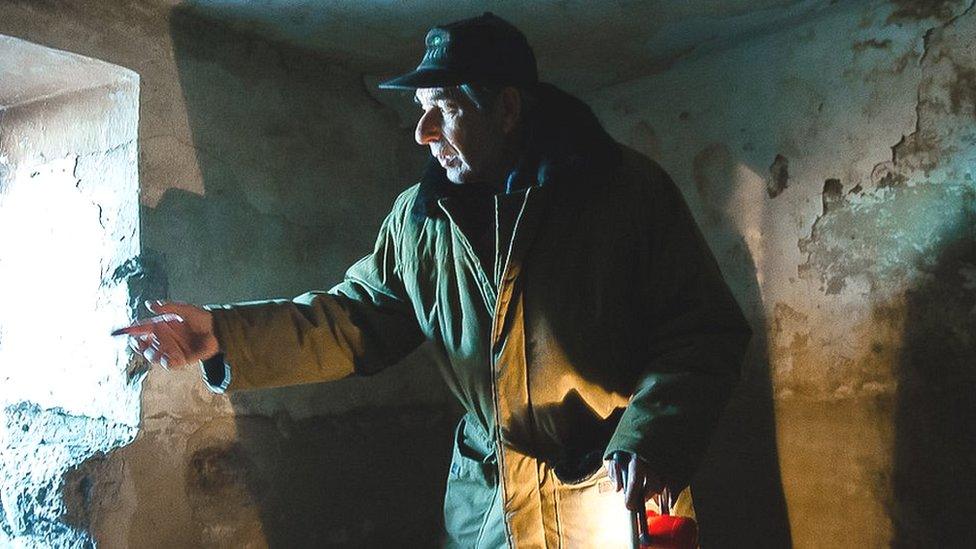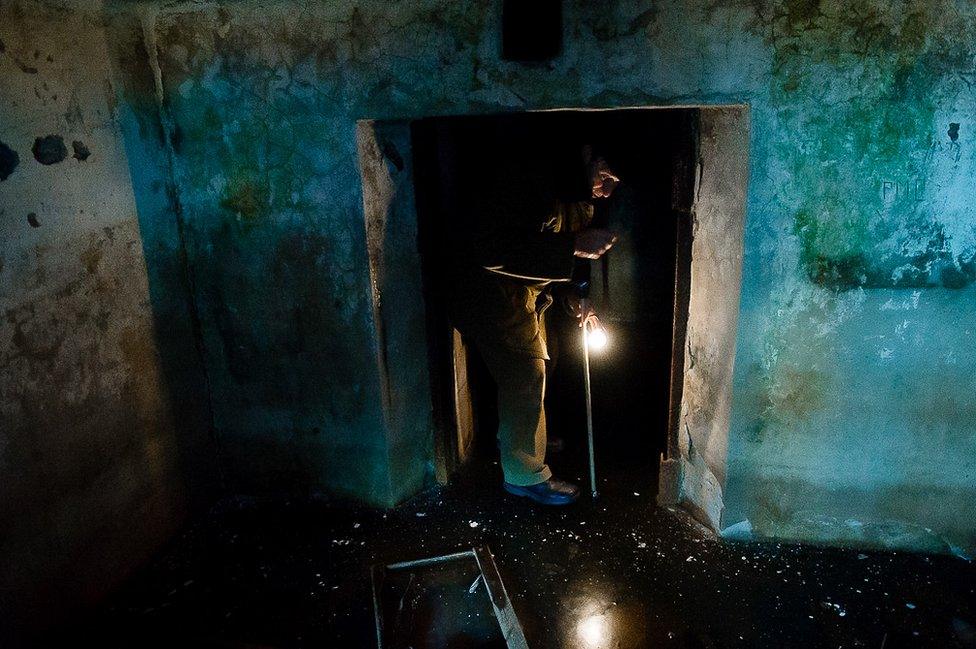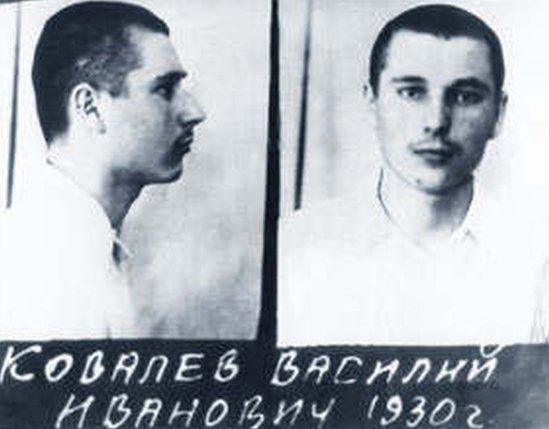Rare witness to horror of Stalin's Gulag prisons dies
- Published

Vasily Kovalyov in a former Kolyma punishment cell
A rare survivor of the harshest Stalin-era labour camps has died aged 89 in Russia's far east.
Vasily Kovalyov had survived icy punishment cells and beatings in the USSR's notorious Gulag prison system.
During an escape attempt in 1954 he spent five months hiding in a freezing mine with two other prisoners.
Kovalyov's story was featured in Vesma, external, a news site based in Magadan. The communist regime shipped thousands of "enemies" to prison camps via Magadan.
In 1950 Kovalyov, aged 20, was found guilty of anti-Soviet sabotage - one among the millions of victims of Stalinist terror. An old sabre that he had used to chop vegetables was enough to condemn him.

The main prison block where Kovalyov was kept in the 1950s still stands

The prison had the designation "tougher regime zone" - part of Stalin's vast Gulag
Dicing with death
First he was sent to Norilsk, in the Russian Arctic, he told Vesma. But he ended up in Kolyma, a notoriously harsh network of labour camps north of Magadan, after guards uncovered an escape plot.
In 1954 he and two other inmates hid in a mine and prepared an armed uprising, but someone tipped off the guards, who then came looking for them.
"Miners who knew the place inside out accompanied them and said we wouldn't be able to stand the permafrost there longer than a week," he told Vesma.
"They blocked all the entrances with grilles... We spent five months underground, in the dark, starving. After three months we had eaten all our food, and in the end we were chewing wood shavings."
He said they managed to dig a way out through the permafrost and emerged "half-blind, like moles". They made it to a nearby town, but were arrested there.
During a punishment beating the guards let loose a huge sheep dog on him, he said.
"It leapt at me, but I had protective metal studs on my boots, and kicked the dog down. In a flash I dived at its throat and bit hard. I heard a crunch and the dog shuddered then died."

A punishment cell: Solitary confinement in the basement, thick ice on the ground
Millions died during Joseph Stalin's dictatorship - in deportations, famine, forced collectivisation, executions and prison camps.
The terror he unleashed involved massive purges of the Communist Party and state institutions.
Read more on the Soviet prison camps:
No forgiveness
Kovalyov was released in 1957, when Stalin's successor Nikita Khrushchev declared an amnesty for Gulag prisoners, in the post-Stalin "thaw".
He stayed in Magadan, where he worked as a heating engineer. And he took a Vesma reporter, Yevgeny Radchenko, on a tour of the grim prison - a ruin still reeking of cruelty.
He died of a stroke in a Magadan hospital on Monday.

The Soviet police mugshot of Kovalyov as a prisoner - he was born in 1930
According to Vesma, "until his last breath he never forgot what the Soviet Union did to millions of people, who endured the camps, leaving their best years, their health and their lives there".
"He told the story of his trip back to Odessa region, where he met the people who had put him in prison. He did not forgive them. The cruelty and torment of camp life taught him to survive, but at the same time to stay human."
Very few Kolyma prisoners from the Stalin period are still alive, a Russian historian told the BBC.
Alyona Kozlova, chief archivist at the Memorial documentation centre, external, said "I know of three in Moscow, and it's possible that he was the last one in Magadan".
But about four million ex-Soviet citizens are alive today who spent some time in Stalin's prisons, she said.